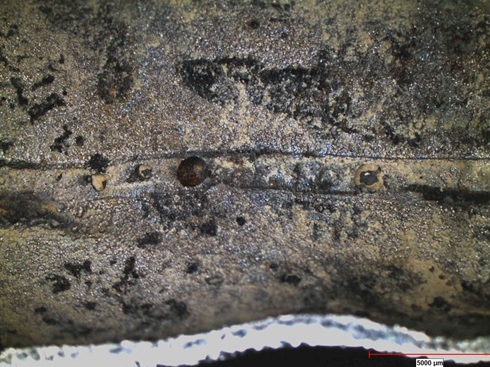Transpassive Corrosion
Nickel alloys are often chosen for aggressive environments because of their high corrosion resistance. However, nickel alloys can sometimes be the wrong choice, because they go transpassive.
A mineral processing plant was heating a raffinate with steam at about 80°C and the raffinate contained:
Sulphuric Acid 66.5g/L
Chloride 0.2g/L
Copper 13g/L
Iron 50g/L
Alloy C-276 (Ni/15Cr/15Mo/3W) was chosen for the heat exchanger tubes and it would have resisted the acid/chloride mixture at 80°C. However, both cupric and ferric ions are strong oxidizers, and the presence of substantial quantities of both in the raffinate meant that the electrochemical potential of the alloy was in the transpassive zone. In this region molybdenum salts are soluble and pitting is likely. The photo shows pitting and severe corrosion of both the parent tube and the seam weld.
The solution is to use an alloy with a wider passive zone, such as occurs at higher chromium contents. Although there are nickel alloys with higher chromium contents, the use of Z100 superduplex stainless steel (Fe/25Cr/7Ni/3.5Mo/0.7Cu/0.7W) offered a lower cost solution. The alloy has performed well in this environment.

Pitting of seam-welded alloy C-276 tube handling oxidizing raffinate.
Posted on: 7th Nov 2016

